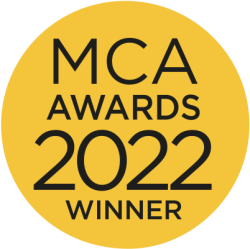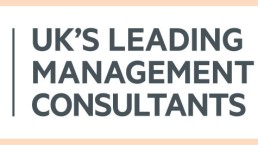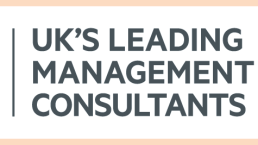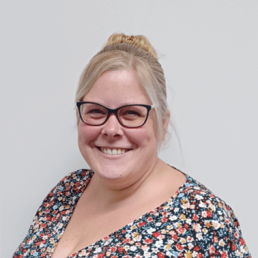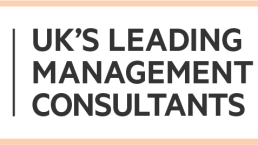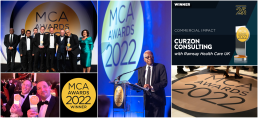2024 Resolutions: Means vs. Ends - A Business Leader's Perspective
We’re almost through the first quarter of 2024, and the airwaves are still buzzing with predictions about the major trends that will dominate our business landscape. Consultants, advisors, and thought leaders offer a plethora of “means” to navigate this complex terrain – AI, digital transformation, sustainability… the list goes on. But amidst this information overload, a crucial question arises: are these experts truly addressing the “ends” that matter most to business leaders?
This analysis summarises the major trends identified in various industry publications, providing a comprehensive business outlook for 2024 – the “means”.
Seven Key Themes – The “means”
- Artificial Intelligence (AI): The emergence of Generative AI is a dominant theme, impacting all business functions. Experts emphasise the need for proactive integration of AI at the core of operations, not as an afterthought.
- Economic Landscape: Prolonged high-interest rates and inflation in the first half of the year, coupled with slower progress, necessitate strategic adaptation for businesses to maintain growth.
- Sustainability: Environmental and social sustainability require significant investments. Businesses are urged to accelerate their transition and embed climate change initiatives into their core strategies.
- Talent Acquisition: The ongoing “war for talent” necessitates focused strategies to attract and retain top talent for business success.
- Digital Transformation: Leveraging technology for intelligent automation and digital transformation is critical to avoid falling behind competitors.
- Geopolitical Risks: Potential disruptions due to global conflict are anticipated, impacting supply chains, resources, and energy prices. Companies need to build resilience to weather these challenges, particularly in a year with widespread global elections.
- Data Management: Publications highlight the importance of data as a distinct focus area beyond digital transformation. Businesses should prioritise data security, governance, and utilisation for informed decision-making.
However, our analysis of industry publications reveals a disconnect between the “means” prescribed (above) and the “ends” desired by executives. While the predictions paint a picture of necessary transformations, they often neglect the fundamental question: what do we realistically want to achieve this year?
Executives crave practical guidance on achieving specific outcomes, not just a list of challenges and technologies.
The “ends”
Here’s a closer look at the “ends” driving business leaders in 2024:
- Fit-for-Purpose Operating Models: Businesses need to ensure their core structures are adaptable and efficient in a volatile environment. Leaders must prioritise reforming their operating models, to remain competitive and building a solid foundation before layering on technology.
- Cost Control and Efficiency: Reducing costs and driving efficiency are paramount in a challenging economic climate. While AI promises automation, executives seek immediate solutions like streamlined processes and improved productivity, especially in the post-pandemic hybrid work model.
- Balancing Sustainability and Stakeholder Value: Executives acknowledge the importance of climate change and responsible practices, but concerns about regulatory burdens and cost implications often overshadow immediate action. Strategic investments are prioritised when balancing sustainability with stakeholder expectations.
- Navigating Regulatory Burdens: Overregulation is seen as a major hurdle, adding costs and hindering agility. Businesses seek a more balanced approach that ensures compliance while fostering innovation and customer satisfaction.
- Customer Centricity at its Core: Attracting and retaining customers in a competitive landscape remains a top priority. Businesses must go beyond cost-cutting, focusing on quality, ethical practices, and a seamless customer experience.
- Building Resilience for the Future: Adaptability and robustness are crucial in today’s ever-changing world. Executives see AI and other trends as potential tools, but not the only answer. Nurturing internal innovation and building resilience across all dimensions is key.
The takeaway? Business leaders are actively strategising, but they prioritise practicality and outcomes over theoretical trends. They crave guidance on how to achieve their specific goals, not just a list of “what” to do. In this uncertain environment, focusing on building capacity, formulating clear strategies, and delivering tangible results will be key to success.
So, what about you? Are you focusing on the “means” or the “ends” in your 2024 resolutions?
CONTACT US TO FIND OUT HOW WE CAN HELP
UK’s Leading Management Consultants 2024
We are delighted to have been recognised again as one of the ‘UK’s Leading Management Consultants 2024’ by the Financial Times
Recommended across 11 categories an increase from 8 in 2023, the annual rating, compiled with data company Statista is based on endorsements by clients and peers. It demonstrates our consistent year-on-year sector and service line growth.
Consulting companies are awarded Bronze (recommended), Silver (frequently recommended) or Gold (very frequently recommended).
Sectoral Expertise
· Aerospace & Defence – Bronze
· Chemicals & Pharmaceuticals – Bronze
· Construction & Infrastructure – Silver
· Energy, Utilities & Environment – Bronze
· Financial Institutions & Services – Bronze
· Healthcare & Life sciences – Silver
· Public Sector – Bronze
Consulting Services
· Digital Transformation – Bronze
· Operations & Supply Chain – Silver
· Strategy – Silver
· Sustainability – Silver
Managing Partner Andrew Morgan said
The FT Awards are a humbling recognition of our company’s continued growth and as a direct result of our team’s talent and commitment. I’m deeply grateful for their unwavering dedication, incredible drive and ability to deliver outstanding results for our clients.

CONTACT US TO FIND OUT HOW WE CAN HELP
Jamie Halstead

Analyst
+44 (0)1653 628596
Jamie is a dynamic professional, known for his exceptional skills in strategy work, data analytics, and financial modelling. With a versatile approach to problem-solving, Jamie effectively applies his expertise across a variety of sectors, helping clients navigate complex business challenges with innovative solutions.
Holding a Master’s degree in Mechanical Engineering from the University of Bath, Jamie combines his strong technical background with keen analytical skills to deliver data-driven insights and strategic guidance. This educational foundation not only underpins his professional capabilities but also fuels his passion for continuous learning and adaptation in the ever-evolving landscape of management consulting.
Outside of his professional life, Jamie is an avid enthusiast of physical activities, finding balance and inspiration in exercising, snowboarding, and surfing. These pursuits not only reflect Jamie’s dedication to personal health and well-being but also mirror his approach to professional challenges—tackling each with energy, commitment, and a readiness to dive into new experiences.
CONTACT US TO FIND OUT HOW WE CAN HELP
Navigating the future: AI's impact on wealth management firms
In recent months, the financial services industry has witnessed significant advancements in artificial intelligence (AI), sparking both excitement and apprehension amongst wealth managers. While the potential benefits of AI are undeniable, the wealth management sector has been understandably cautious in embracing this transformative technology. This hesitation can be attributed to several factors, including a prioritisation of addressing critical gaps in services, concerns about client relationships, and the unique needs of different market segments.
In this blog, we explore the hopes and fears of integrating AI in wealth management, balancing the potential savings and efficiencies that can come from technological advancement alongside the concerns over an erosion of personalised client services.
Back office transformation
The potential for improved efficiency through AI and machine learning is substantial, particularly in areas like automating trade settlements, automating regulatory compliance, and risk management.
However, within the technology function of many wealth management firms, the primary focus often relates to implementing new traditional services and upgrades to address key operational gaps. Implementing non-AI solutions to enhance services such as regulatory compliance, Environmental, Social, and Governance (ESG), Customer Relationship Management (CRM), and digital services are typically considered more important and lower risk.
Because of the potentially significant benefits and the remarkable pace of change in AI, we believe that wealth management firms should put aside time and budget in 2024 to carefully evaluate the potential efficiencies and cost savings offered by AI, balancing these against the benefits of their current project portfolio. This assessment will help determine if prioritising AI integration is a strategic move that aligns with their operational goals.
Front office dilemma
We are starting to see the emergence of more AI-powered tools that can transform the front office experience for wealth managers and their clients. Early adoption of these innovations has the potential to allow client advisors and relationship managers to better serve “mass affluent” clients. Use of AI in this environment could combine the advantages of a human-led personalised service and advisor judgement with the scalability and insights that AI can provide.
However, implementation of AI in the front office remains a challenge. Securing funding to develop new AI capabilities requires proof of value to the organisation and clients. Wealth managers must also weigh up the benefits against factors such as data and integration challenges, evolving financial services regulations for AI, and the perceived lack of trust from clients in insights generated from AI.
Industry evolution
We believe a small number of early adopting wealth managers armed with AI capabilities are likely to start disrupting the industry at some point in the next year. Developing a strategy, plan, and business case for AI integration is important to avoid being left too far behind.
Key considerations
- Early adoption dilemma: The decision to be an early mover or a follower with respect to AI in the wealth management market needs careful consideration of the associated risks and rewards.
- Barriers to progress: For those who decide to invest in AI, there are some foundational elements that could act as barriers to AI progress if not addressed:
- Data governance and quality: Building a foundation of sound data governance and ensuring data quality is imperative for effective AI implementation. This discipline is important in any organisation but vital to get the best out of AI solutions.
- Robust data infrastructure: Modern platforms with adaptability to change swiftly are most suitable to form the backbone of successful AI integration.
- Skilled resources: The availability of appropriately skilled individuals is critical for navigating the complexities of enterprise AI.
Conclusion
As the wealth management sector contemplates the role of AI, a delicate balance must be struck between embracing innovation and preserving the personal touch that defines many client relationships. While challenges exist, we believe that the potential rewards in terms of cost savings, productivity gains, and enhanced client experiences will make the journey towards AI integration worthwhile. Wealth managers should consider their strategy for when and how to look at the opportunities that AI can provide for them to ensure that they don’t fall behind their competitors.
CONTACT US TO FIND OUT HOW WE CAN HELP
Aziz Yuldashev
Senior Consultant
+44 (0)1653 628596
Aziz has 12 years of experience in international relations and diplomacy before his consulting career. He gained his strategy, stakeholder management, operations and change management expertise while performing his duties at the Ministry of Foreign Affairs of Uzbekistan, the Embassy in Singapore and the UN office.
Aziz holds an MBA from the Alliance Manchester Business School, the University of Manchester. He is interested and enjoys solving complicated and challenging issues with clients by delivering well-structured, innovative and efficient solutions that bring long-term lucrative outcomes.
CONTACT US TO FIND OUT HOW WE CAN HELP
Edward Hunt
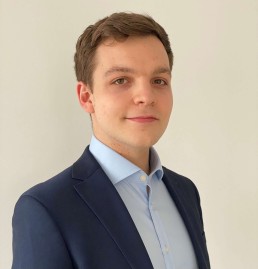
Consultant
+44 (0)1653 628596
Edward is an emerging professional with a growing track record of success in supporting operational efficiency and procurement projects. By combining his understanding of business fundamentals with proficiency in data analysis, he supports clients by extracting valuable insights that drive informed decision-making.
Prior to joining Curzon, he specialised in the audit of financial services companies at a leading accounting firm. His background in audit has equipped him with an understanding of the regulatory landscape and the ability to assess internal controls and recommend enhancements to mitigate risk.
Edward holds a BSc in Accounting and Finance from the London School of Economics.
CONTACT US TO FIND OUT HOW WE CAN HELP
Driving Strategic Impact: A Curzon Consulting Guide to Procurement Excellence
As management consultants, we help clients achieve substantial cost savings and efficiencies through procurement transformations. But truly effective transformations require surmounting common challenges like limited spend visibility and stakeholder alignment.
Based on a recent engagement delivering over £5M in savings, here are our proven tips for procurement transformation success:
Optimise spend visibility
Robust spend analysis is crucial. Categorise expenditures and pinpoint top suppliers and contracts per category. Without clean baseline data, it’s impossible to identify savings levers. Advanced analytics and mining uncover hidden insights, while stakeholder interviews provide a qualitative context.
Benchmark and identify gaps
Benchmark pricing and performance versus industry best practices to reveal overpayment. Consolidate volumes for improved leverage. Deep supply market analysis uncovers alternative vendors and guides negotiations.
Strategise and priortise
Conduct opportunity assessments to inform transformation planning. Develop tailored category-specific sourcing strategies. Model potential savings scenarios and sequence initiatives based on impact, effort, and stakeholder readiness.
Secure stakeholder alignment
Amidst change, align stakeholders through clear communication and early buy-in. Identify key decision-makers and influencers. Educate on best practices and projected bottom-line impact. Procurement must shed its tactical image and be seen as a strategic function driving millions in bottom-line impact.
Relentlessly implement
With the strategy set, focus intensely on implementation. Maintain discipline in negotiations while preserving supplier relationships. Enforce contract compliance and tail spend management.
Continuously improve
Sustaining change requires continuous improvement. Redesign operating models, policies, KPIs, training, and integrate new tech and ways of working. Build analytics to monitor savings and flag waste recurrence. Institutionalising change is the hallmark of procurement leaders.
After meeting our cost-savings goals, we leveraged our award-winning assessment framework to ensure the procurement organisation’s long-term success. Our framework evaluates Procurement across five dimensions: People, Strategy, Systems, Governance, and Management. This data-driven approach identified gaps and enabled us to strategise implementing best practices. Ultimately, these steps addressed challenges, so the procurement organisation can expand its influence and be viewed as a strategic partner across all business units.

In conclusion
As trusted consultants, we overcome inertia and silos to deliver rapid yet lasting transformation. With deep expertise and cross-industry perspective, we objectively assess opportunities, align stakeholders, and implement best practices. The result is simplified sourcing, lower costs, reduced risks, increased efficiency, and strategic impact.
Let us conduct an initial diagnostic for your procurement organisation. We will benchmark performance, identify savings levers, and provide a roadmap to deliver value.
CONTACT US TO FIND OUT HOW WE CAN HELP
Preetesh Sood

Senior Consultant
Preetesh is a management consultant and technology expert with over 6 years of experience driving digital transformation and innovation initiatives at global corporations. He began his career at Cisco Systems, where he managed the development and delivery of smart manufacturing solutions. By spearheading the global synchronisation of smart manufacturing platforms, Preetesh enabled significant cost savings through operational efficiency.
Most recently, Preetesh worked as a consultant supporting executive leadership across industries, including technology, financial services, and not-for-profit. He led market research, performed statistical analyses, and identified strategic partnerships to enable successful market entry strategies. Preetesh also created valuation models for sustainable investment products and supported the development of go-to-market plans.
With an MBA from the University of Manchester, and a Bachelor’s in Computer Science Engineering, Preetesh brings a data-driven yet pragmatic approach to consulting projects. He leverages his expertise in data analytics, machine learning and technology to drive organisational transformation and inform executive decisions. Preetesh is passionate about innovation and holds certifications in leadership and communication. In his free time, Preetesh enjoys reading on current geo-political affairs, and watching Formula 1 and cricket.
CONTACT US TO FIND OUT HOW WE CAN HELP
UK’s Leading Management Consultants 2023
We are delighted to have been recognised for the sixth consecutive year as one of the ‘UK’s Leading Management Consultants 2023’ by the Financial Times.
Recommended across 8 categories and with a Gold Award for the 2nd consecutive year, the annual rating, compiled with data company Statista is based on endorsements by clients and peers. It demonstrates our consistent year-on-year sector and service line growth.
Consulting companies are awarded Bronze (recommended), Silver (frequently recommended) or Gold (very frequently recommended).
Sectoral expertise
- Construction & Infrastructure – Gold
- Healthcare – Silver
- Financial Services – Bronze
- Public & Social Sector – Bronze
Consulting services
- Digital Transformation – Silver
- Operations & Supply Chain – Silver
- Strategy – Silver
- Sustainability – Silver
Managing Partner Andrew Morgan said
We are absolutely delighted to see the continued and consistent progression of Curzon. I am so proud of the team, as this emphasises their commitment and dedication to deliver sustainable, tangible results for our clients through strategic, operational and transformation delivery.

CONTACT US TO FIND OUT HOW WE CAN HELP
2022 MCA Awards Winners
We are so very proud to announce #CurzonConsulting, has won the Commercial Impact #mcaawards 2022 award, with #RamsayHeathCare. Representing the very best of our consulting business, it’s such an incredible achievement to be recognised for our Procurement Transformation Programme. The judges said this was a team that: “brought specific expertise to a problem and rebuilt the procurement capability at speed, changing hearts and minds in the organisation.”
Established by the Management Consultancies Association, the representative body for the UK’s leading management consulting firms, the #MCAAwards demonstrate the transformational work the sector has undertaken during the last challenging twelve months.
The remarkable achievement marks the eight consecutive years that Curzon Consulting has been a finalist at these prestigious awards.
Commercial Impact: Procurement Transformation Programme with Ramsay Health Care UK
Ramsay Group operates a global network of 530+ healthcare facilities across 11 countries.
The pandemic exposed an over-reliance on a ‘single’ income source. With all elective activity (e.g., joint replacements, cataracts), the primary income source, halted overnight, but a high fixed cost base remained.
As a response, Ramsay UK embarked on an ambitious growth & efficiency programme. Curzon was engaged to design and deliver a Procurement Transformation programme.
Over 9 months, we took a pragmatic, agile and “together” approach to accelerate benefit delivery, particularly in high spend / high complex clinical spend categories.
By assessing the existing PO against a methodical and objective review against 8 dimensions we highlighted several data-driven insights; fundamentally, the PO only managed 44% of total spend; hence lack of PO involvement resulted in suboptimal category /supplier management and savings delivery.
Improvement opportunities were incorporated into the design of the new Procurement Organisation.
Our methodology was specifically adapted to address demand-side cost optimisation levers.
Through a deep dive into orthopaedics, a key benefit delivered in Orthopaedics came from ensuring the Surgeon selected the appropriate implant system (metal or ceramic) to match the patient’s profile (e.g., age, gender).
A well-established norm in Orthopaedics is to routinely implant, high quality, lower-cost metal vs. ceramic hip systems into >70-year-old patients. Our analysis showed Surgeons at Ramsay UK implanted costly ceramic hip systems in 33% of >70-year-old NHS patients. The NHS reimbursement for a complete hip replacement is fixed, so every incremental switch from ceramic to metal impacted the bottom line.
Surgeons had little comprehension of how their hip selection decisions impacted Ramsay UK’s profitability. Our insights directly influenced the Orthopaedic Steering Group’s new policy which required Surgeons to utilise lower-cost metal hip systems in older NHS patients.
Curzon established an open, trusted, and collaborative way of working with the Ramsay team, and by adopting a “one team” approach with the PO we ensured everyone involved with the procurement transformation owned the outcome and maximised the benefits from knowledge transfer during Wave 1.
Fundamentally a key part of the relationship was to ensure recommendations on cost improvement would not compromise clinical outcomes and patient satisfaction.
Wave 1 has delivered £multi-millions in incremental annualised savings. In addition, the savings have translated into several £100 million worth of shareholder value.
Commenting on the success – Ramsay Health’s CFO Peter Allen said:
“Curzon helped us obtain the confidence and operational ‘can-do’ to drive incremental savings sooner than we could have expected, and then to push on to best practice performance.
Their skill was in balancing pace of change and the results imperative with the need to take the organisation with them on the journey. A key achievement was building the necessary collaboration between the many functions that needed to act together to drive benefits in complex clinical spend categories.
Curzon’s strong analytical expertise, and ability help us to take a critical view on the “art of the possible” and bring the team along on the journey to demonstrate benefits delivery was a critical success factor.
The result was a tangible and ongoing commercial win, and a new Procurement Organisation to drive cost leadership, profitability and sustainability going forward”
A massive congratulations to the Curzon Consulting team and Ramsay Health Care UK and the other finalists.
